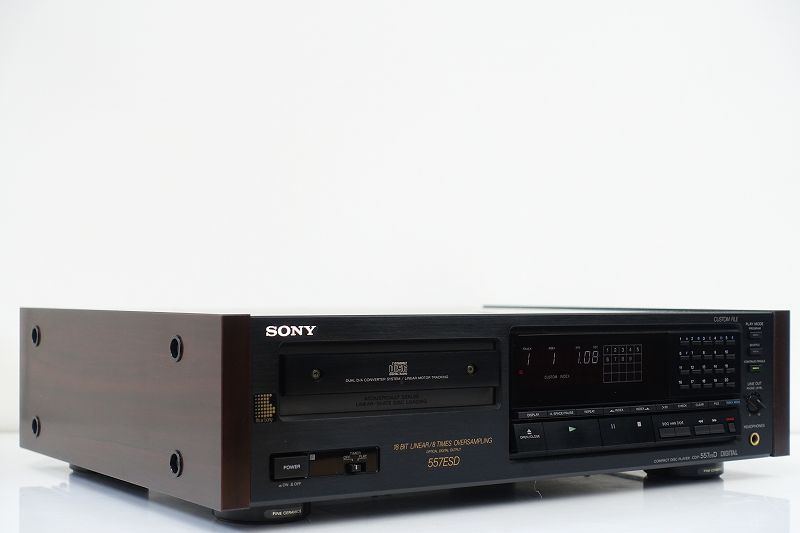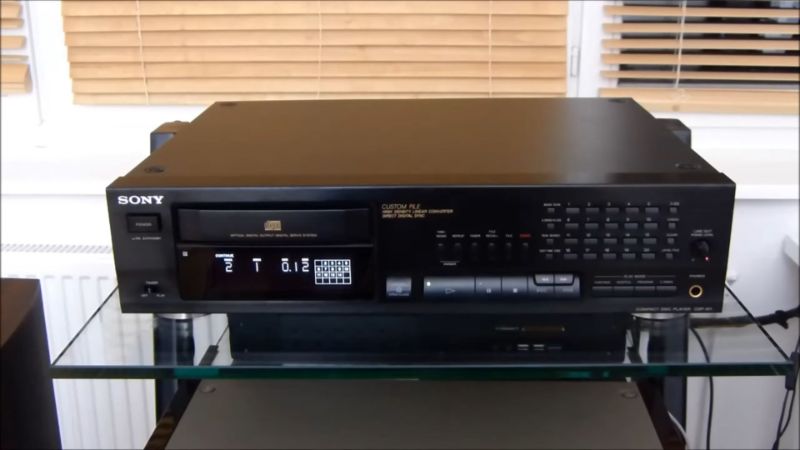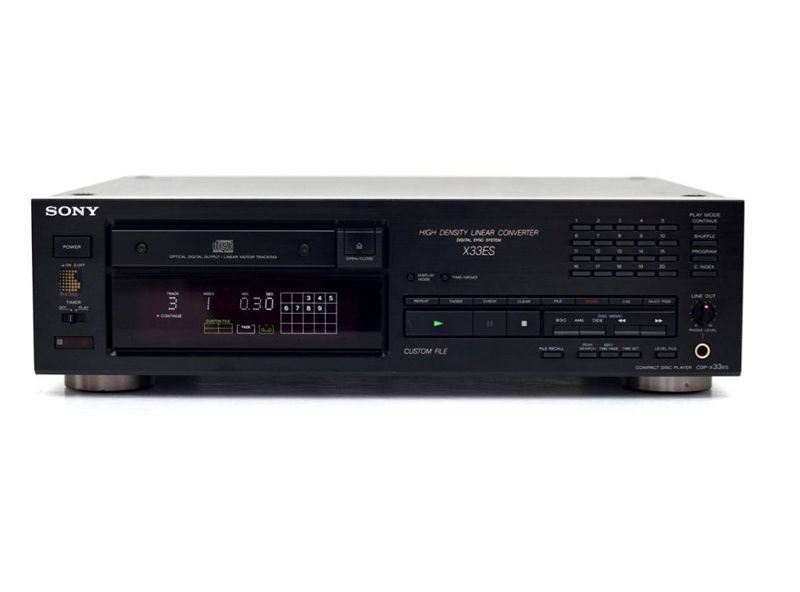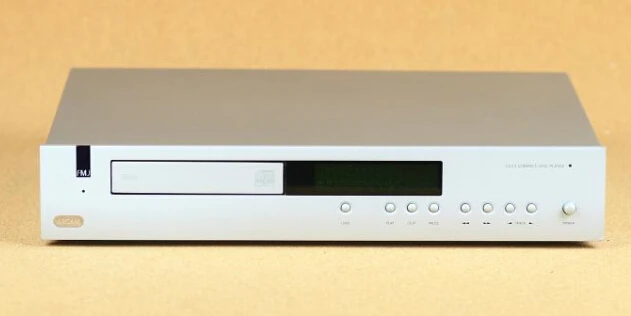When Compact Disc was first introduced in 1982, there was a lot of debate over how it sounded. There were two separate CD player tribes at first: Philips-based units and Japanese-based machines. The former had DACs that only went up to 14-bit resolution but oversampled the digital datastream four times, such as the Philips CD100. The latter, such as the Sony CDP-101, did not oversample and instead used all 16 bits.
In terms of sound, the Philips designs were preferred by most Europeans, who found them to be more organic and tonally smoother than the more brash Japanese machines. In general, audiophiles who supported the CD chose Philips, as did a number of hi-fi firms that wanted to offer their own silver disc spinners. Meridian, Mission, and Marantz were just three examples, with the latter — a completely owned subsidiary of Philips – naturally collaborating the most with the Dutch consumer electronics behemoth.
This meant that Marantz had a shadow CD player range – starting with the CD-63 (closely based on a Philips CD100) in 1983 and the CD-45 Limited Edition a few years later, the company carved out a new identity by expertly tweaking a Philips chassis to create something that would appeal to audiophiles rather than casual consumers looking for their first CD spinner.
Sensing a marketing weakness in the Philips computers’ ‘only’ 14-bit nature, the Japanese highlighted the ‘complete 16-bit’ character of their machines. Despite the fact that the TDA1540 DAC chip used in Philips machines delivered excellent quality, the Dutch company was compelled to reply and in 1984 released the CD160, its first 16-bit player, alongside the £200 CD-273 from Marantz. Philips could now compete in the specification war thanks to the TDA1541 16-bit, four-times oversampling DAC…
So it reasoned. Japanese machines, such as the Sony CDP-557ES, claimed 18-bit, 8-times oversampling, while the British-designed Cambridge Audio CD2 claimed 16-bit, 64-times oversampling. These figures were calculated by combining current DACs in various combinations, allowing manufacturers to mess with numbers even more. Meanwhile, the average hi-fi customer just chose the model with the highest numbers — 188 had to be superior to 164!
This was misleading, because a CD player’s bit-depth and oversampling configurations were not the only factors that determined its performance. Rather, it was due to more subtle factors including the mechanism’s quality, master clock, filter, vibration isolation, passive componentry, and power supply, among others. However, this did not translate well to sales brochures, and by the end of the 1980s, the CD player world was saturated in misinformation and nonsense.
With the introduction of Bitstream in 1989, the entire awful ‘bits and oversampling’ balloon was deflated. This new Philips technology used an entirely different method of storing and processing digital audio data inside the converter chip itself, as well as a slightly different subjective performance, smoothing up what many viewed as the Compact Disc medium’s rough edges at the time. Bitstream changed the digital world by making goods more affordable and tolerable in terms of performance.
Marantz’s first Bitstream implementation was with the CD-52, a good-quality £250 machine that replaced the very similar-looking but multibit DAC-equipped CD-50. Philips’ first (and now iconic) SAA7350GP DAC chip was now installed, along with the (at the time) most recent Philips CDM12.1 swing arm mechanism. It introduced new levels of refinement to inexpensive CD players, which had a coarse, fuzzy sound laced with distortion and ‘digititus’ at the time.
Ishiwata had a fantastic machine to work with when it came to the new Special Edition, and he did so with a smattering of fancy Elna and Silmic capacitors here and there, as well as some OFC wiring. The fundamental player, though, saw no upgrades – in modern terms, the ’52SE feels like a pretty primitive object to operate, with a festival of plastic casework and chassis, as well as an unappealing neon display that felt mandatory back in the day. The disc tray is also cheap and cheerful, but it does provide very quick disc access from the days when CD players employed custom CD mechanisms rather than anything meant to read a DVD-ROM inside a PC.
The CD-52SE, on the other hand, left a lasting impression in terms of sound. Back in 1991, it gave affordable silver disc sound the best of both worlds: first, the new Bitstream convertor’s clarity, openness, and distortion-free sound, and second, the Ken Ishiwata adjustments package’s extra subtlety, warmth, and depth. As a result, a great-sounding cheap product emerged. This was arguably the first £300 machine that you could go back to after having lived with a high-end CD player, despite not being as nice as £1,000 designs. It wasn’t obscenely vulgar, and it also has a distinct musical personality that made listening enjoyable.
For example, compared to standard mid-price multibit machines, the CD-52SE’s midband would sound cleaner and more broader, with a bit more depth as well. There would be less ‘digital glare’ across the upper midband, less of the impression that voices and snare drums had been plated in chrome and then shone with a bright light! Treble was equally excellent, with plenty of room and filigree detail, as well as a lack of harshness. Only the bass pulled the ’52 down, as it was a little weak compared to some of its price rivals, but it was usually quite tuneful.
All of this combined to create a fantastically accessible and affordable silver disc spinner that gave cash-strapped digital audiophiles a true taste of the high end for a reasonable price. Owning a Marantz CD-52SE demonstrated that you understood what you were doing when it came to selecting a product that was both inexpensive and high-performing. Magazines gushed over it, dealers couldn’t get enough of it, and Marantz began to emerge from the shadows of its parent firm to make its own name in the hi-fi world. Marantz sold them by the warehouse load, and a late-life ‘Mk II’ version received a brief adjustment to keep the production lines operating. The spin at the time was that the basic non-SE Mk II had most of the modifications of the Mk I SE, and while it was a significant upgrade, it wasn’t quite worth selling your Mk I for.
Regardless of the version you choose, the Marantz CD-52 is a fun-to-listen-to music player with plenty of personality, and it deserves credit for being the first to introduce decent-sounding digital disc to the people. Today, the good news is that you can get a decent working example for less than £50, which is a fantastic deal if you’re looking for a cheap silver disc source.







